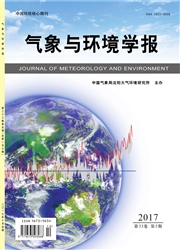

 中文摘要:
中文摘要:
以天津地区典型的津河局部地段作为研究对象,结合城市地理信息和排水管网运作方式,重新构建城市内涝模型,将河网、路网、管网和社区的计算网格分层划分,形成相对独立的河网、路网、管网和社区的计算模拟体系,通过对城市内涝数学模型进行改进,形成分区分层与立体多重的城市内涝计算模式。选取2009—2015年天津地区的10次降雨过程,结合排水部门提供的城市积水信息和河道水位数据,对建立的立体多重城市内涝模型的模拟结果进行验证。结果表明:建立的天津地区立体多重城市内涝模型模拟的最大积水深度与实况积水深度误差绝对值小于10 cm的降水过程,占模拟的2009—2015年天津地区全部降雨过程的88%,模拟的液面过程与实测液面过程的变化趋势一致,模拟的河道水位与实况水位的统计平均误差均小于10 cm,水量平衡的相对误差为0。可见,建立的天津地区立体多重城市内涝模型可以有效的模拟城市河道的水位和城市积水的变化。
 英文摘要:
英文摘要:
A typical partial section of the Jin River in Tianjin was taken as the research object in this study,and a waterlogging model was reconstructed based on urban geographic information and operational modes of drainage pipe network. Grids of river, road, sewer and community in the urban waterlogging model were partitioned by layer in order to build independent modelling systems for these grids,and then a multiple and three-dimensional urban waterlogging model with different sub-regions and layers was developed based on the established systems. The simulation results of ten rainfall events in Tianjin from 2009 to 2015 were validated using the urban seeper information and the data of river water level provided by Drainage Management Department. The results indicate that 88% of all the rainfall processes in Tianjin from 2009 to 2015 was simulated with an absolute error between the simulated and real maximum seeper depth less than 10 cm. The evolution of water level simulated by the model is consistent with the real evolution,with a statistical mean error between the simulated and measured river water level less than10 cm and a relative error of water balance of zero. This multiple urban waterlogging model can effectively simulate the variation of river water level and urban seeper.
 同期刊论文项目
同期刊论文项目
 同项目期刊论文
同项目期刊论文
 期刊信息
期刊信息
